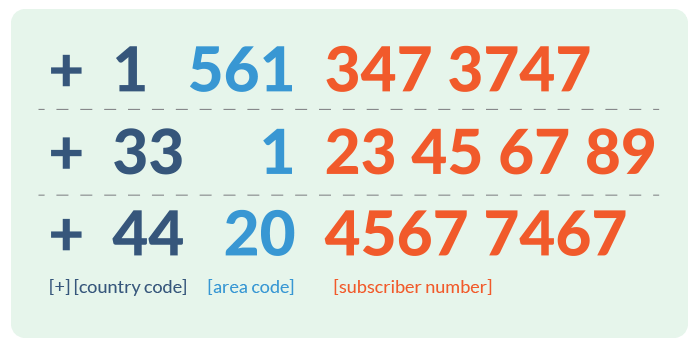Telephone numbers typically get assigned according to national telephone numbering plans, such as the North American Numbering Plan (NANP) for the United States and Canada. These plans can be “open” or “closed,” significantly impacting the structure and accessibility of phone numbers within different regions.
This article will explain global telephone numbering plans, the differences between open and closed ones, and the common ways to format telephone numbers across various countries.
Closed Versus Open Numbering Plans
Closed numbering plans contain a fixed number of digits for each telephone number. For instance, countries under the NANP adhere to a 10-digit format.
Conversely, open numbering plans in countries like Mexico, Germany, and Japan allow variable numbers of digits, offering flexibility but potentially increasing complexity for users.
The critical difference between an open and closed numbering plan is that telephone numbers under closed numbering plans have a fixed number of digits, while telephone numbers under open numbering plans do not.
What is a Trunk Prefix?
A trunk prefix is a necessary digit or series of digits dialed before the actual phone number, as it specifies the appropriate telecom circuit by which the call should route. Trunk prefixes play a crucial role in both open and closed numbering plans, enabling efficient call routing and maintaining system integrity.
In most countries, the national (in-country) trunk prefix is ‘0’, while the ‘+’ sign most easily represents the universal international trunk prefix.
For instance, consider dialing practices in Australia:
A Sydney phone number would be dialed (02) XXXX XXXX for callers in Australia. From out of the country, the number would be formatted +61 2 XXXX XXXX.
Countries like Australia, the UK, Japan, Brazil, and the UAE use 0 as a national trunk prefix, among many others. After 0, the most common national trunk prefix is 8, mainly used in the CIS.
Global Telephone Number Formatting
The formatting of telephone numbers varies significantly across the globe.
The standard 10-digit format (3+3+4 grouping) prevails in the US and Canada, while other countries might use different lengths and groupings.
The differences in telephone number formatting across countries can be significant. For example, in Sweden, phone numbers can vary in length and are usually divided into groups separated by spaces: +46 (08) XXX XXX XX for a Stockholm number. In contrast, Argentine numbers follow a different pattern, like +54 (011) XXXX-XXXX for Buenos Aires.
Luckily, the E.164 standard provides a unified format for international numbers, accommodating up to 15 digits and ensuring global interoperability.

Do ITFS Numbers Require a Trunk Prefix and Country Code?
ITFS numbers are only reachable from within their respective countries, which means they cannot be dialed internationally. This eliminates the need to enter a country code before dialing the toll-free number. In most countries, attempting to dial a country code before a toll-free number will make the number unreachable.
The ‘0’ trunk prefix should also be omitted when calling a toll-free number. However, it’s important to note that countries have different toll-free prefixes, such as 800, 0800, and 888, which indicate that the number is toll-free and must be dialed.
E.164, E.123, and Beyond
E.164 and E.123 are central frameworks in global phone number formatting.
While individual telephone numbering plans facilitate standardized approaches for their respective countries, E.164 extends this standardization internationally, ensuring global consistency and clarity in telecommunications.
Complementing E.164, the E.123 standard provides guidelines for presenting email addresses and telephone numbers domestically and internationally. This standard aims to enhance readability and reduce confusion in global communications, specifying notations for trunk prefixes, area codes, and local numbers.
Together, E.164 and E.123 form a comprehensive set of guidelines supporting interoperability and communication across different countries and regions.
Practical Implications for Businesses
Understanding the nuances of global telephone numbering plans is essential for businesses operating internationally. Proper formatting of international phone numbers on marketing materials, product packaging, or directives ensures accessibility for global contacts.
A basic understanding of global telephone numbering plans aids in navigating the complexities of international telecommunications, ensuring consistent and reliable communication across different countries and regions.
Global Call Forwarding Can Help
Telephone numbering plans are the backbone of global telecommunications, facilitating voice connections worldwide. Whether through closed or open numbering plans, trunk prefixes, or the standardized E.164 format, these systems ensure that every call reaches its intended destination.
To learn more about phone number formatting across countries, speak with one of our telecom experts. We have more than 28 years of experience helping businesses navigate the complexities of global telecommunications.


